Autonomous Vehicles Are on the Way. Are Cities Ready? UCLA Downtown Los Angeles Forum on Transportation, Land Use and the Environment focuses on planning for the connected movement of people and goods
By Stan Paul
Autonomous vehicles, once considered science fiction, are quickly becoming a reality.
With the technology and testing of driverless cars and trucks progressing rapidly, private industry is investing. At the same time, planners and policy makers are confronting another challenge: How will technology, policy, governmental legislation and industry practices come together to make the potential benefits of autonomous transportation a reality that is responsible, equitable and good for the environment?
To address these issues, two UCLA Luskin School of Public Affairs research centers — the Institute of Transportation Studies (ITS) and the Lewis Center for Regional Policy Studies — used their April 13, 2007 transportation conference to focus on the implications of autonomous vehicles. The 10th UCLA Downtown Los Angeles Forum on Transportation, Land Use and the Environment brought together speakers representing the technology industry, along with planning researchers, and practitioners in the government and private sectors.
This year’s downtown forum, held at the California Endowment Los Angeles Conference Center was titled, “Steering Connected and Automated Mobility in the Right Direction.” Speakers and expert panels provided a look at the policy aspects of ridesharing and driverless transportation, from liability and equality viewpoints to greenhouse gas emissions and infrastructure. The panelists also discussed how the anticipated disruption of autonomous vehicles might play out locally, across California and around the nation.
Lauren Isaac, director of business initiatives for EasyMile, a high-tech mobility startup, discussed how connected and automated technologies may shape the future.
“What the data shows is that there needs to be either a costs savings or a time savings” to get people to participate, Isaac said. “There needs to be some benefit to a user to make that decision. The good thing is because of the way technology is evolving there’s great potential for both.”
Governments also play a part by providing HOV lanes and infrastructure for a faster ride, she said. “I think those are the kinds of levers that both technology providers and government can pull.”
Isaac said that freight companies will most likely be the No. 1 sector among the early adopters. “That industry is really interested in this,” she said, citing a shortage of drivers and huge cost savings that could come from moving goods this way.
“On the passenger side, I think without question we’re seeing the best response come from the younger generation,” she said, noting that there is also significant interest from the senior and disabled communities. “That being said, the challenge is how do you transfer people in wheelchairs or if they need additional help? People still rely on humans to get into the vehicles. So there’s still a lot of issues to work out around the para-transit piece,” Isaac said.
Chris Ganson, a senior planner from the California Governor’s Office of Planning and Research, described some of the research he has seen. “The plus side here is — with a lot of this kind of thinking on automated vehicles — it’s really kind of this funny combination of research and futurism that’s going on,” Ganson said. “We’re extrapolating from our current experiences to try to figure out what things might be like in the future, and what we might need to do about them, but there is a lot of convergence in that thinking.”
Despite this, he said, “We have some tough things to do policywise and politically to receive these autonomous vehicles into our society.”
Ganson also said that it makes sense to be proactive while planning for the future. “While you’re repaving … or building a new transit system, adding the technology now saves 10 times the cost of putting it in later,” he said.
Maya Buenaventura, assistant policy analyst at the RAND Corp., provided a quick primer on common law, tort law and liability issues that would come with taking humans out of the driver’s seat, as well as product liability issues for manufacturers of autonomous cars and parts. There may be some uncertainty in the details initially, she explained, but many of the longstanding concepts of common law that apply to personal injury and property damage would also apply to autonomous vehicles.
“The outcome might not be optimal from a social welfare perspective right away,” she said. “Judges need to start thinking in the long term — what are the long-term costs and benefits — if this is something they’re just going to pick up as autonomous vehicles get introduced. But it is not clear that there are any better options.
“Another thing that we’ve come to realize is the identity of potential defendants isn’t going to be very different when autonomous vehicles are introduced,” Buenaventura added. “There’s still going to be, potentially, lawsuits against the driver, against manufacturers, against the component part manufacturers. And suits against these defendants already exist today.”
For Eric Shaw, director of the Washington, D.C., Office of Planning, “This question of why we want to be ‘smart’ in the first place is actually a question we haven’t answered yet. For us, it’s not just smart vehicles, it’s smart planning. We need to understand how to be smart.”
Shaw, a pre-Luskin 1998 UCLA graduate minored in what was then policy studies, said his city’s overarching commitment is to spatial and racial equity, which must be balanced with the goal of livability, new innovation and understanding urban efficiency.
“We are having crazy growth in our city,” Shaw said of Washington. “We’re a historic city, one of the oldest cities in the nation. We’re one of the most planned cities in the nation.”
With equity and access in mind, Shaw pointed out that the nation’s capital has a huge income disparity. He asked whether creating a system around pricing automatically creates a system that excludes the city’s low-income residents.
With this in mind, Shaw said that his department was looking at a number of scenarios for the city’s future.
“We’re not afraid to test; we’re not afraid to pilot. So we are looking at some of the best practices, looking at ideas of shared mobility and performance, and we’re not afraid to get it all right before we do that,” Shaw added. “We’re OK to test and take some risks, but with the same question right now — racial equity, spatial equity of land use of the built environment.”
Brian D. Taylor, professor of urban planning and director of both the ITS and the Lewis Center, pointed out the importance of addressing the issues covered in the forum.
“The presentations and discussion made clear that the rise of shared, connected and autonomous vehicles poses significant new challenges for transportation planners and policymakers, and in addition cast existing challenges into sharper relief,” Taylor said. “Addressing these challenges head-on today will help to ensure that we steer these new systems in the right direction.”
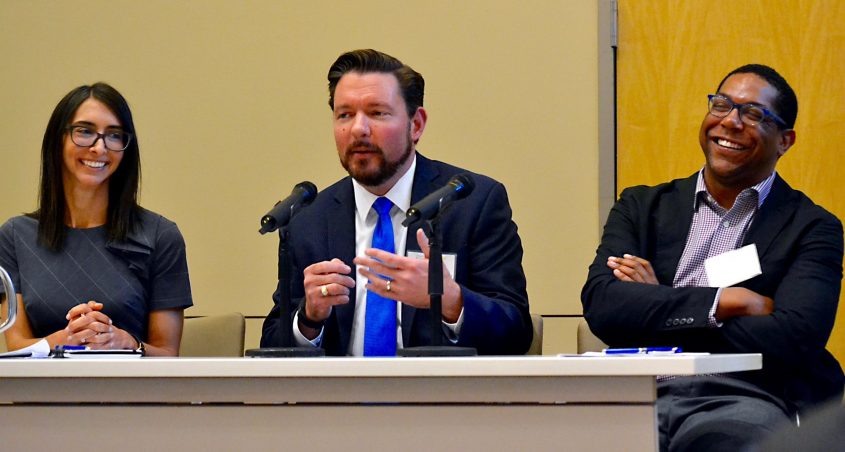

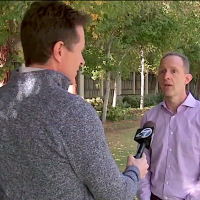
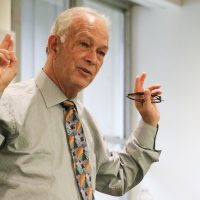
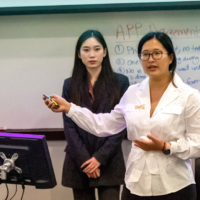
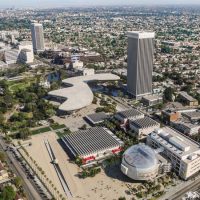
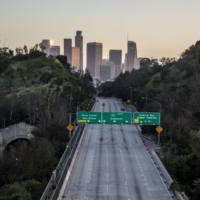


Leave a Reply
Want to join the discussion?Feel free to contribute!